|
This feature is a continuation from Part One.
ON SOLID GROUND
The horse was now out of the soupy bog but she still wasn't clear of unstable ground. Hand tension was maintained on the recovery straps to prevent her from rolling back into the slop if she struggled. She was not happy about the excavator so it was moved away. The slip sheets were repositioned and she was dragged by hand past the other unstable ground and deep ruts.
Laying out the final removal strategy.
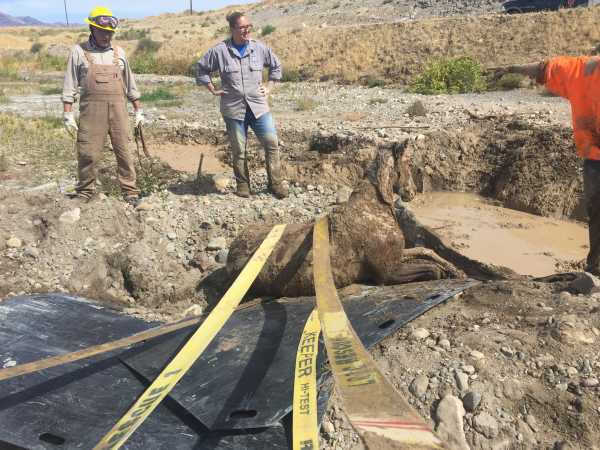
At one point as we were repositioning the straps the horse slid about on the Slip Sheets coming to rest in a sternal position facing the intended exit. We formed a hasty forward assist by passing a strap over the withers and flossing both ends under the front legs. The rescuers crossed the straps as they came out between the horse's legs to keep them from slipping off. One more good tug and the horse was now clearly free of the unstable area. (We were all busy at this point and didn't get a photo.)
Finally on solid ground. (Jesse still has a tag line attached.)
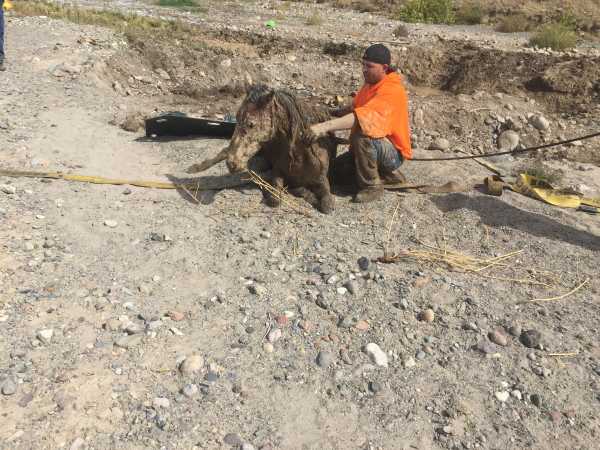
Once the horse was clear, she let Jesse approach and was interested in nibbling on some local vegetation. (Tumble mustard seemed to suffice in this regard.)
Some nibbling while regaining strength.
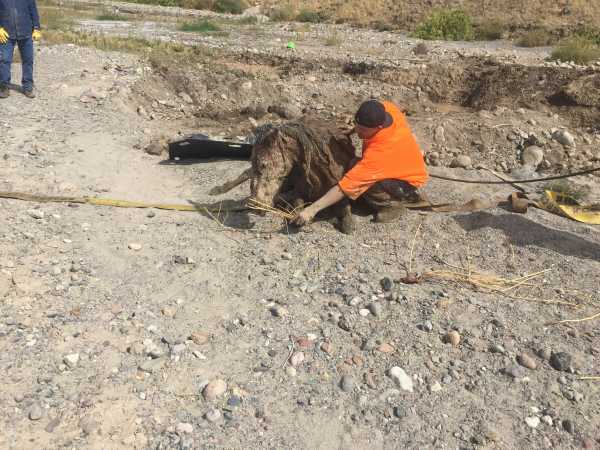
Given that hypothermia was an issue we placed warming blankets on the horse.
Warming back up and still interested in snacks.
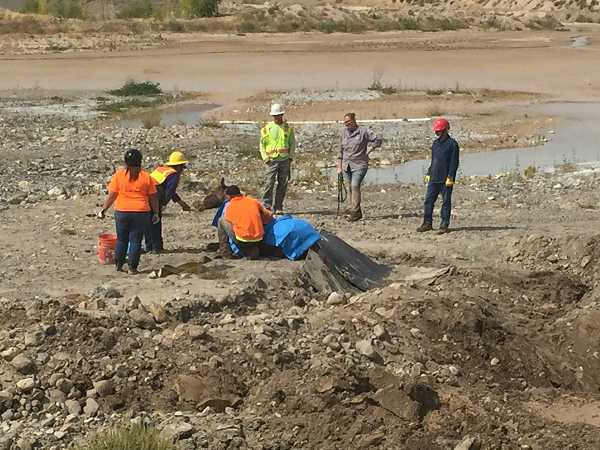
Eventually the horse decided to get back onto her feet, and after investigating one of the recovery straps, she walked off in the direction she came from. (A natural instinct in these instances is for a horse to simply get up and walk off.)
We observed her movement and determined that she was not lame and she resumed doing "natural" wild horse things such as investigating the plants the encountered along the way.
Standing and regaining her bearings. Everyone remained quiet.
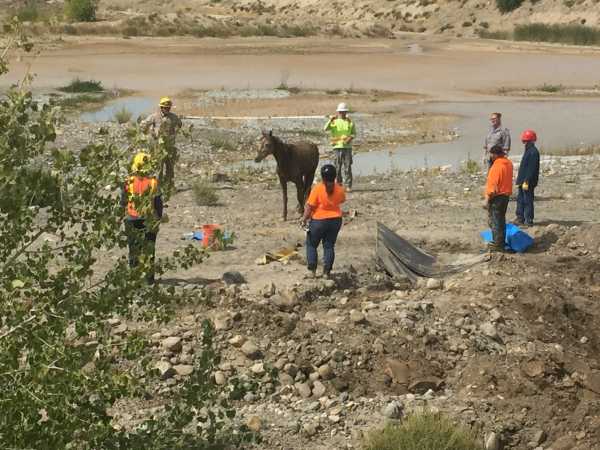
Investigating a recovery strap.
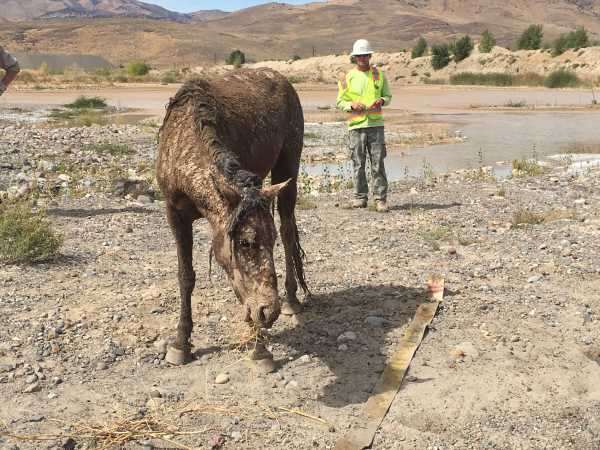
Going on her way.
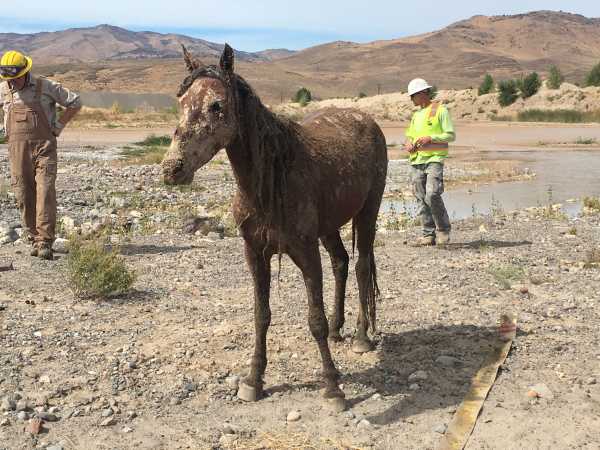
We did discover that she was lactating. A search party went out looking for any signs of a foal nearby, finding none. This late in the year her foal was probably fairly mature and would likely be found somewhere in the area with the rest of the band.
The point of entry. Notice from the fence line the violent scouring from the flash flood.
(The fence is now suspended a good 16 feet in mid air.)
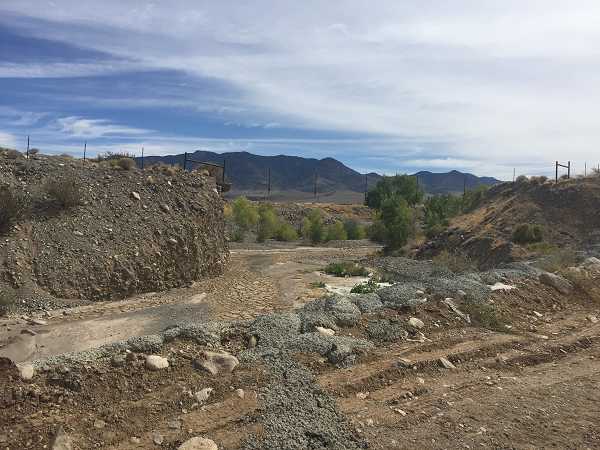
9/26 post incident update. A local resident familiar with the horses reported that on the following day the mare was seen reunited with her family band and her foal was present also. Except for being covered with dried mud, she appeared unharmed.
| 










